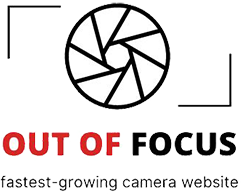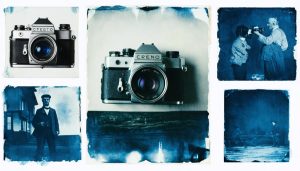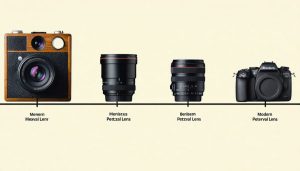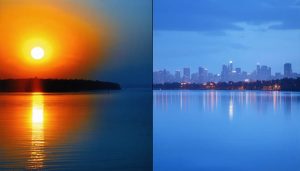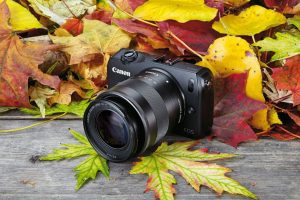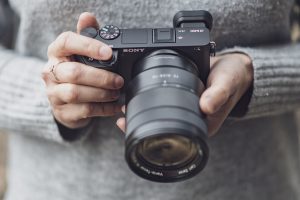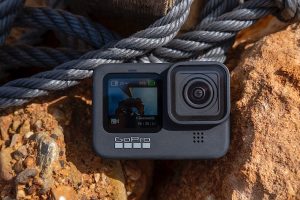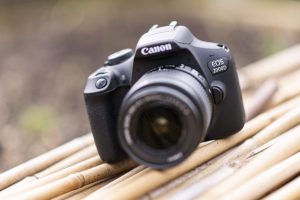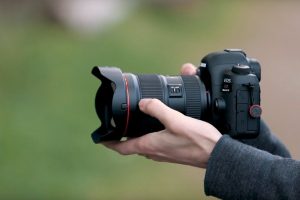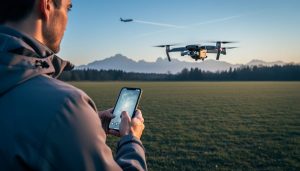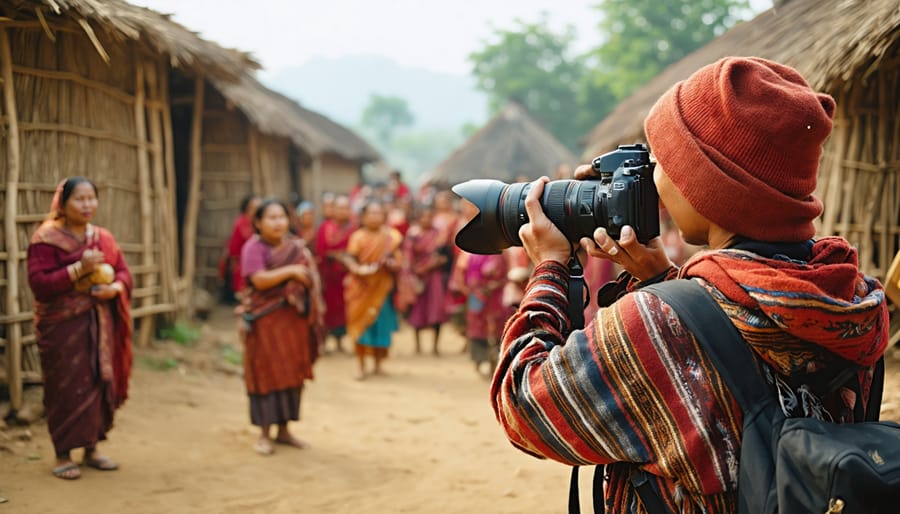
Every photograph tells a story deeply rooted in the photographer’s cultural lens, shaping not just what we capture, but how we see the world through our viewfinder. Cultural photography transcends mere documentation, emerging as a powerful intersection between artistic expression and anthropological insight.
Through the delicate interplay of light, composition, and cultural context, photographers navigate the complex terrain between being observers and storytellers of human heritage. Whether documenting ancient traditions in remote villages or capturing the evolving dynamics of urban communities, cultural photography demands both technical precision and profound cultural sensitivity.
This artistic discipline challenges photographers to move beyond surface-level aesthetics, diving deep into the intricate layers of human experience. It requires understanding not just the mechanics of exposure and framing, but also the subtle nuances of cultural symbols, social dynamics, and historical context that give each image its soul.
In today’s interconnected world, cultural photography serves as a vital bridge between diverse communities, helping us understand and appreciate the rich tapestry of human experience. For photographers, it offers a unique opportunity to develop their artistic voice while contributing to the broader dialogue about identity, tradition, and social change.
The most compelling cultural photographs don’t just capture moments; they preserve stories, challenge perspectives, and create lasting connections between viewer and subject. This introduction to cultural photography will explore how to master both the technical and interpersonal skills needed to create images that resonate across cultural boundaries.
The Cultural Lens: How Heritage Shapes Visual Storytelling
Personal Heritage in Photography
A photographer’s cultural heritage often serves as an invisible lens through which they view and capture the world. This personal background influences everything from subject choice to composition style, creating a unique visual language that reflects their cultural identity.
Consider the work of Sebastião Salgado, whose Brazilian roots and connection to rural communities shine through his powerful black-and-white documentations of working people worldwide. Similarly, Raghubir Singh’s vibrant street photography embraces the colorful chaos of Indian life, refusing to conform to Western monochrome traditions.
Cultural identity manifests in subtle ways too. A photographer raised in a collectivist society might naturally gravitate toward compositions that emphasize community and interconnectedness, while someone from an individualistic culture may focus more on singular subjects and personal narratives.
The choice of subjects, lighting, and even post-processing techniques often reflect cultural aesthetics. Japanese photographers, for instance, frequently incorporate concepts like “ma” (negative space) and “wabi-sabi” (finding beauty in imperfection) into their work.
For emerging photographers, embracing rather than suppressing cultural influences can lead to more authentic and compelling images. This doesn’t mean limiting oneself to cultural stereotypes, but rather understanding how personal heritage can inform artistic choices and enrich visual storytelling.
Your cultural background isn’t just part of your story – it’s a powerful tool for creating distinctive, meaningful photographs that resonate with viewers while contributing to the diverse landscape of contemporary photography.
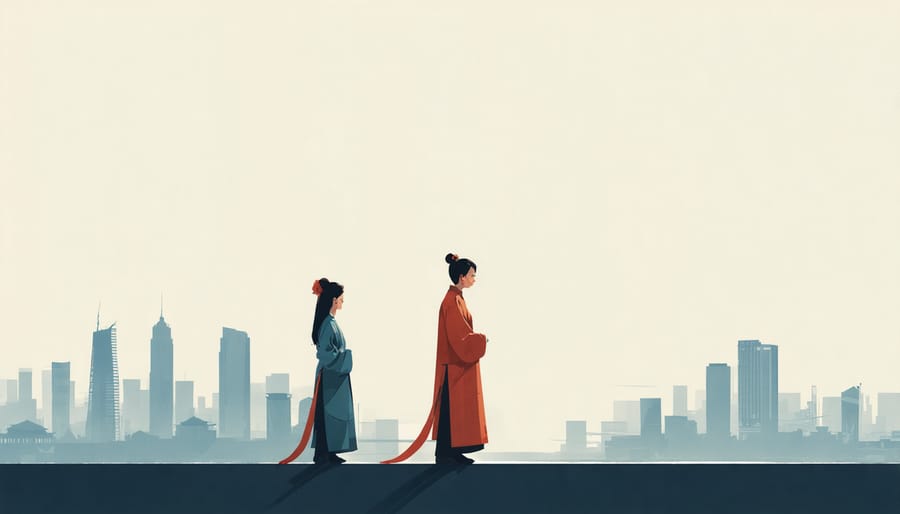
Visual Language Across Cultures
The interpretation of visual elements in photography varies dramatically across cultures, creating a rich tapestry of meaning that photographers must navigate carefully. Color, for instance, carries distinct cultural significance – while white represents purity in Western cultures, it’s associated with mourning in many East Asian societies. These cultural nuances directly impact how we approach visual storytelling techniques in different contexts.
Composition rules also shift across cultural boundaries. While Western photography often emphasizes the rule of thirds and leading lines, Japanese aesthetic principles like “Ma” (negative space) and “Wabi-sabi” (finding beauty in imperfection) offer alternative approaches to framing and subject placement.
Symbolism in photography takes on different meanings depending on the cultural context. A hand gesture considered friendly in one culture might be offensive in another, while certain animals or objects may carry spiritual or cultural significance that isn’t immediately apparent to outsiders.
Understanding these cultural differences is crucial for photographers working internationally or documenting diverse communities. Before photographing in a new cultural context, research local customs, symbolic meanings, and visual preferences. This knowledge not only helps avoid unintentional offense but also enables photographers to create more culturally resonant and meaningful images that truly connect with their intended audience.
Cultural Techniques and Traditional Influences
Traditional Art Forms in Modern Photography
The intersection of traditional art forms and modern photography creates a fascinating dialogue between past and present. Many contemporary photographers draw inspiration from traditional photography methods while incorporating elements from classical painting, sculpture, and other historical art forms into their work.
Consider how Renaissance painting techniques influence modern portrait photography, with photographers carefully crafting compositions that echo the dramatic lighting and poses found in works by masters like Rembrandt and Caravaggio. The chiaroscuro effect, characterized by strong contrasts between light and dark, remains a powerful tool in contemporary photography.
The influence of cultural influences in photography extends beyond Western traditions. Japanese woodblock prints, for instance, have inspired photographers to experiment with flat perspectives, negative space, and asymmetrical compositions. These elements are particularly evident in modern street and landscape photography.
Traditional textile patterns and indigenous art forms have also found their way into contemporary photography through color theory and compositional choices. Photographers often incorporate these cultural elements either as direct subjects or as subtle influences in their artistic approach.
The digital age hasn’t diminished these connections; rather, it’s provided new tools to explore and reimagine traditional artistic techniques. Modern photographers use advanced editing software to recreate effects that were once achieved through darkroom techniques, while others combine digital technology with ancient artistic principles to create unique visual narratives that bridge the gap between old and new.
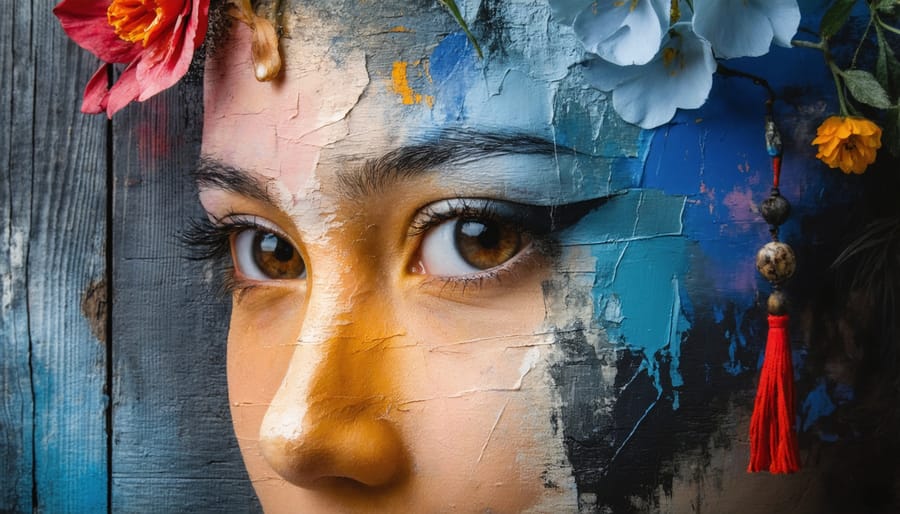
Cultural Rituals and Documentation
Documenting cultural rituals requires a delicate balance of respect, technical skill, and cultural awareness. When photographing ceremonies and traditions, it’s essential to first obtain proper permission from community leaders or event organizers, understanding that some moments may be off-limits for photography.
Position yourself thoughtfully during ceremonies, remaining unobtrusive while capturing key moments. A longer lens can help maintain respectful distance while still achieving intimate shots. Pay attention to the rhythm of the event – ceremonies often have natural peaks and quieter moments that create a narrative flow in your images.
Consider using a combination of wide-angle shots to capture the overall atmosphere and context, along with careful detail shots of significant objects, gestures, or expressions. Traditional ceremonies often feature meaningful items like ceremonial clothing, ritual objects, or specific decorations that tell important parts of the cultural story.
Light plays a crucial role in ritual documentation. Many ceremonies take place in challenging lighting conditions, such as dimly lit temples or during dawn or dusk. Be prepared with appropriate equipment and knowledge of low-light photography techniques. When possible, scout the location beforehand to understand how light changes throughout the day.
Beyond technical considerations, take time to research and understand the significance of what you’re photographing. This knowledge will help you anticipate important moments and recognize subtle details that might otherwise go unnoticed. Work with local guides or community members who can provide context and ensure your presence remains respectful.
Remember that your role is to document rather than direct. Allow events to unfold naturally, and resist the urge to request poses or repetitions of moments for better shots. This authentic approach results in more genuine representations of cultural traditions.
Cross-Cultural Photography: Bridging Perspectives
Ethical Considerations
When photographing different cultures, ethical considerations must be at the forefront of every photographer’s mind. Respect and sensitivity are paramount, as your images can shape perceptions and narratives about communities and traditions that may be different from your own.
First and foremost, always obtain proper consent before photographing individuals or private ceremonies. This means more than just a quick nod – take time to explain your intentions and how the images will be used. In some cultures, photography of certain rituals or sacred objects may be restricted or forbidden entirely. Research and honor these boundaries.
Context matters immensely in cultural photography. Avoid creating images that perpetuate stereotypes or present a superficial view of complex traditions. Instead, strive to tell authentic stories that reflect the true essence of the culture you’re documenting. This might mean spending time with communities, learning about their history, and understanding the significance of what you’re photographing.
Consider the power dynamics at play. As a photographer, you hold significant influence in how others will perceive the subjects of your images. Be mindful of exploitation – both intentional and unintentional. Ask yourself: Does this image dignify the subject? Am I representing this culture accurately and respectfully?
When sharing cultural photographs, provide appropriate context through accurate captions and descriptions. Credit cultural consultants and local guides who helped facilitate your understanding. Be transparent about your outsider perspective when relevant, and consider sharing any profits from cultural photography with the communities you photograph.
Finally, be open to feedback and criticism, especially from members of the cultures you photograph. Cultural perspectives can vary widely, and what seems acceptable to one person might be offensive to another. Maintain humility and willingness to learn, adjust your approach when necessary, and always prioritize the dignity and wishes of your subjects over getting “the perfect shot.”
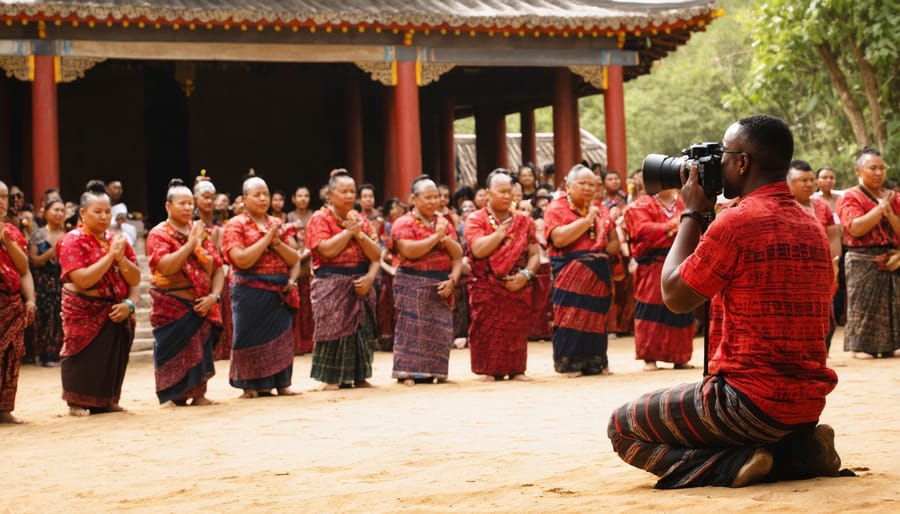
Creating Dialogue Through Images
Photography has a unique power to bridge cultural divides and create meaningful dialogue between different communities. When we capture and share images that represent diverse cultural experiences, we open windows into worlds that might otherwise remain unknown or misunderstood.
Consider the impact of documentary photographers who immerse themselves in different cultures to tell visual stories. Through their lenses, viewers can experience traditional ceremonies, daily routines, and cultural celebrations that might be vastly different from their own. These images become conversation starters, encouraging viewers to ask questions, seek understanding, and challenge their preconceptions.
The key to creating effective cultural dialogue through photography lies in approaching the subject with respect and authenticity. This means moving beyond surface-level tourism photography and investing time to understand the cultural context of your subjects. Engage with local communities, learn about their traditions, and seek permission before photographing sensitive cultural moments.
Visual storytelling techniques play a crucial role in this dialogue. Rather than taking isolated shots, consider creating photo essays that present a more complete narrative. Include environmental portraits that show people in their cultural context, detail shots that highlight significant cultural elements, and wider scenes that establish the setting and atmosphere.
Social media and online photography platforms have revolutionized how we share these cultural narratives. A photograph taken in a remote village can now reach viewers worldwide within seconds, sparking discussions and fostering cross-cultural understanding. However, this accessibility comes with responsibility – photographers must be mindful of how they represent different cultures and ensure their work promotes understanding rather than reinforcing stereotypes.
The most powerful cultural photographs often emerge when photographers develop genuine relationships with their subjects. This might mean returning to the same community multiple times, participating in local activities, and allowing people to become comfortable with your presence before raising your camera. The resulting images tend to be more intimate and authentic, creating more meaningful dialogue between cultures.
Technical Approaches to Cultural Photography
Equipment and Settings
Successful cultural photography requires thoughtful equipment selection and technical preparation. While high-end gear isn’t always necessary, certain tools can enhance your ability to capture authentic cultural moments.
A versatile camera body with good low-light performance is essential, as many cultural events occur in dimly lit indoor spaces or during twilight hours. Full-frame sensors excel in these conditions, but crop-sensor cameras can also perform admirably when paired with appropriate lenses.
For lens selection, prioritize versatility and discretion. A 24-70mm zoom lens serves as an excellent all-purpose option, while a 50mm prime lens offers both quality and inconspicuousness. When photographing ceremonies or performances, a longer telephoto lens (70-200mm) allows you to maintain respectful distance while capturing intimate moments.
Consider your composition techniques when choosing camera settings. Use aperture priority (A/Av) mode for environmental portraits, controlling depth of field to balance subject emphasis with cultural context. In dynamic situations, shutter priority (S/Tv) mode helps freeze motion during festivals or dances.
Pack light but smart: include a silent shutter option if available, extra batteries, and plenty of memory cards. A compact flash unit can help in challenging lighting, but use it sparingly and diffused to maintain authenticity. Consider weather-sealed equipment if working in humid or dusty environments common in many cultural settings.
Remember that the best gear is what allows you to work unobtrusively while maintaining image quality. Focus on equipment that won’t create barriers between you and your subjects, allowing for more genuine cultural documentation.
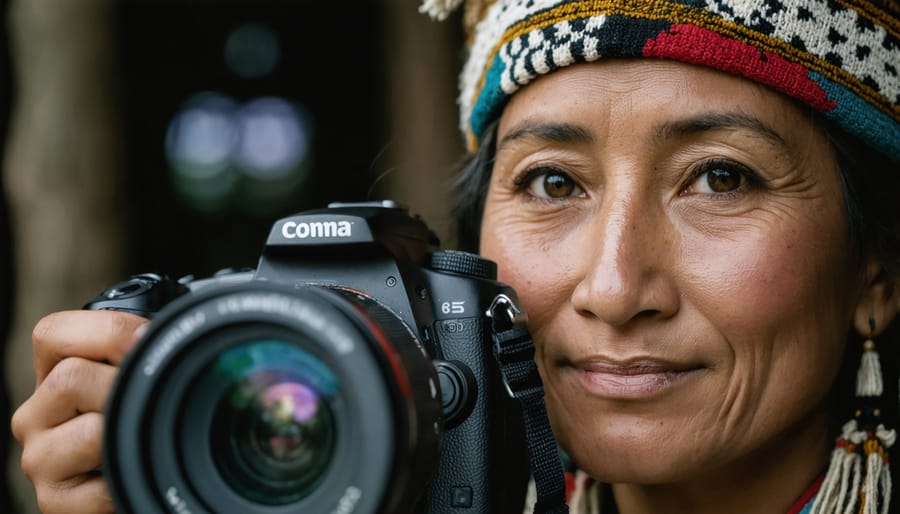
Post-Processing with Cultural Context
Post-processing is more than just technical adjustments; it’s an extension of cultural storytelling through visual means. Understanding color theory in photography becomes particularly crucial when editing images that carry cultural significance.
Different cultures interpret colors and visual elements uniquely. For instance, while Western cultures might associate white with purity and weddings, many Eastern cultures traditionally use white in mourning ceremonies. These cultural nuances should inform your editing decisions, from color grading to contrast adjustments.
When processing images of cultural events or traditions, consider preserving the authentic atmosphere rather than applying trendy filters or presets. If you’re editing photos of a traditional Indian wedding, the rich reds and golds should be enhanced to reflect their ceremonial importance, not muted to match contemporary minimalist aesthetics.
Similarly, when working with portraits of people from different cultures, be mindful of skin tone representation. Avoid over-editing that might alter natural skin tones or facial features that are integral to cultural identity. This respect for authenticity extends to environmental portraits, where the editing should enhance rather than diminish cultural context.
Consider developing specific editing presets that honor cultural elements while maintaining technical quality. For religious ceremonies, this might mean preserving the warm glow of candles or the ethereal light in places of worship. For cultural festivals, it could involve enhancing the vibrancy of traditional costumes without making them appear artificial.
Remember, post-processing should serve the story you’re telling while respecting the cultural context of your subject matter. This balanced approach ensures your final images are both visually compelling and culturally sensitive.
Cultural awareness in photography goes far beyond simply capturing striking images – it’s about respecting, understanding, and authentically representing the diverse tapestry of human experiences. As photographers, we have the unique responsibility and privilege of serving as visual storytellers, bridging gaps between different cultures and fostering understanding through our work.
Throughout this exploration of cultural photography, we’ve seen how being culturally aware enhances not just the technical quality of our images, but also their depth, meaning, and impact. Whether photographing traditional ceremonies, daily life, or portraits across cultures, understanding the context and significance behind what we capture helps us create more meaningful and respectful representations.
Remember that cultural photography isn’t just about documenting differences – it’s about finding common threads that connect us all while celebrating what makes each culture unique. By approaching our subjects with respect, taking time to learn about their customs and traditions, and being mindful of cultural sensitivities, we can create images that tell authentic stories and promote cross-cultural understanding.
As you continue your journey in photography, make cultural awareness an integral part of your creative process. Take time to research and understand the communities you photograph, build meaningful relationships with your subjects, and always consider the impact your images might have on the cultures you’re representing.
The most powerful cultural photography doesn’t just capture what we see – it helps us understand who we are as human beings, breaking down barriers and fostering connections across cultural boundaries. By embracing cultural awareness in our work, we can contribute to a more understanding and interconnected world, one photograph at a time.
